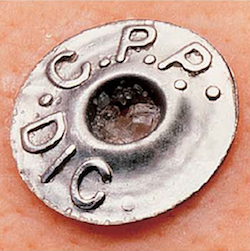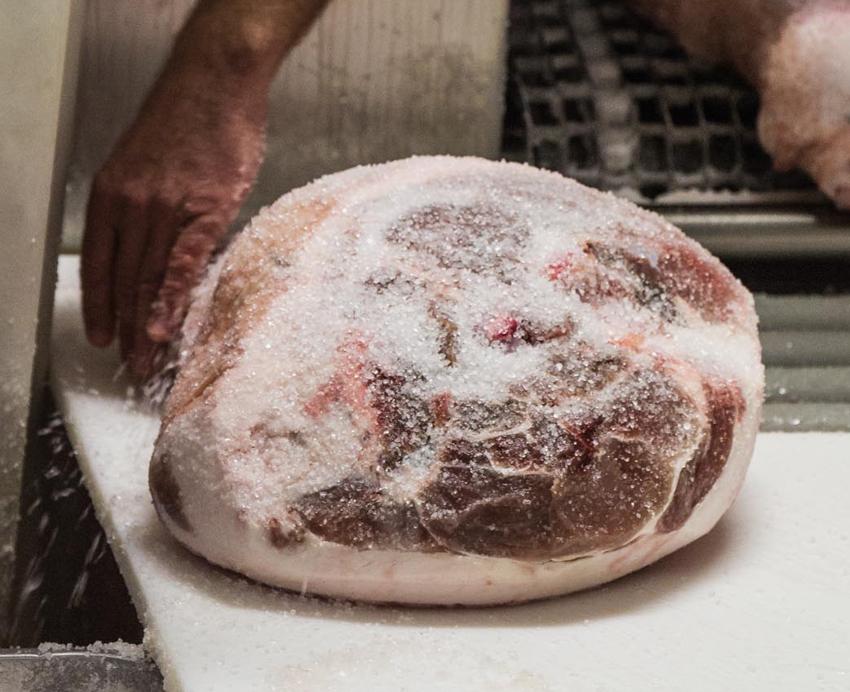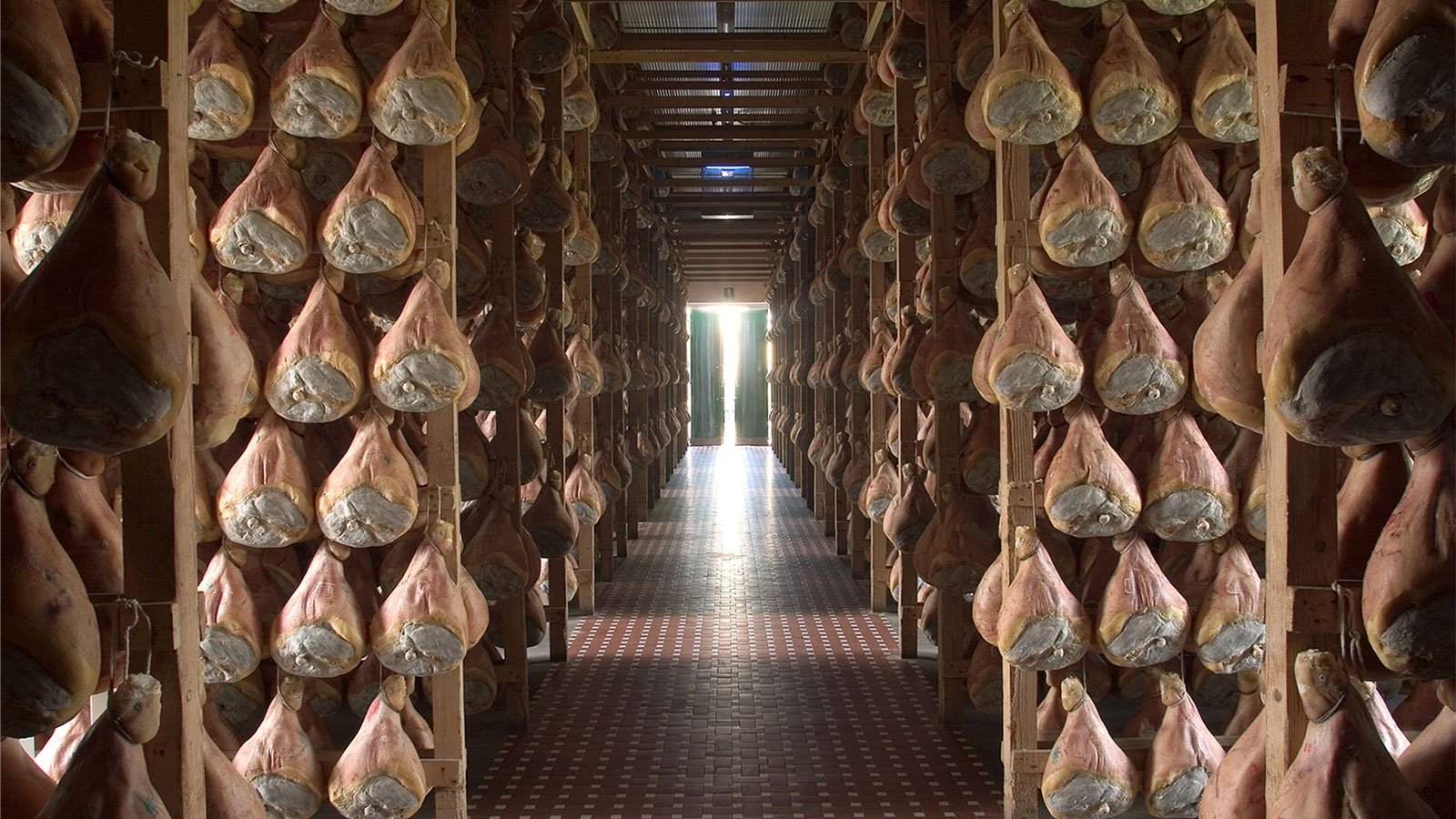How It’s Cured
Each leg undergoes the following process to ensure it upholds the quality and standards that the Consorzio sets for Prosciutto di Parma.
Tattoos and Tagging
 The legs reach the prosciuttificio (processing plant) already with a tattoo of the breeder featured on them. At this stage, each leg is also tagged with a button, indicating the date it began curing. These are just a couple examples of a completely traceable production process.
The legs reach the prosciuttificio (processing plant) already with a tattoo of the breeder featured on them. At this stage, each leg is also tagged with a button, indicating the date it began curing. These are just a couple examples of a completely traceable production process.
Salting
Next, salting is completed by hand in the traditional manner, by the maestro salatore, or salt master, who uses only the minimal amount of sea salt necessary. This makes Prosciutto di Parma taste less salty than other cured hams. In Parma, the only “ingredients” added to the pork during production are the highest quality Italian sea salt, air and time. The leg is then refrigerated at a temperature ranging from 34°F to 39°F, with a humidity level of approximately 80% for about a week and gets a second thin coating of salt which is left on another 15 to 18 days, depending on the weight of the leg. Salt is the only preservative used in the process; no chemical elements are allowed.

Resting + Salt Absorption
Next, the legs hang for a period ranging between 60 and 90 days in refrigerated, humidity-controlled rooms, to ensure the sea salt properly absorbs into the meat.
Washing
The legs are then washed with warm water and brushed to remove excess salt and impurities, then hung in drying rooms for a few days.
Initial Curing
Next, the legs are hung on frames in well-ventilated rooms with large windows that are opened when the outside temperature and humidity are favorable; this allows for a constant and gradual drying of the hams. Connoisseurs believe that this period is critical to the development of Prosciutto di Parma’s distinct flavor. By the end of this phase, which lasts about three months, the exposed surface of the meat has dried and hardened.

Lard Layering
The exposed surfaces of the legs are then softened with a mixture of lard, salt and pepper to prevent the external layers from drying too quickly. This is the layer that needs to be trimmed before you hand slice a bone-in leg.
Final Curing
In the seventh month, the leg is transferred to the “cellars,” rooms with less air and light, and hung on racks until the curing is completed. By law, Prosciutto di Parma destined for the U.S. must be cured for at least 400 days (starting from date of first salting), and some may be cured as long as three years.
Prosciutto Inspection
After that time has passed, an independent inspector pierces the leg in several locations with a horse bone needle, sniffing it after each puncture to check for scents that may indicate any flaws or spoilage.
Fun Fact: A horse bone is used to test the hams because it absorbs and releases scents quickly, which helps the inspector tell if there’s any spoilage, but lets him use it again for the next ham.
Parma Crown Branding
Assuming the leg passes the test, the independent inspector brands the five-point Ducal Crown on the leg, which acts as the final guarantee of the quality of the ham. Waiting legs that haven’t yet received the brand cannot be called Prosciutto di Parma. Only legs that meet the Consorzio’s high standards become Prosciutto di Parma once they’re fire-branded with the Parma Crown. The firebrand also shows the identification code of the producer.
If you’re interested in setting up a visit to see a prosciuttificio the next time you’re in Italy, contact your supplier directly or the Consorzio del Prosciutto.

